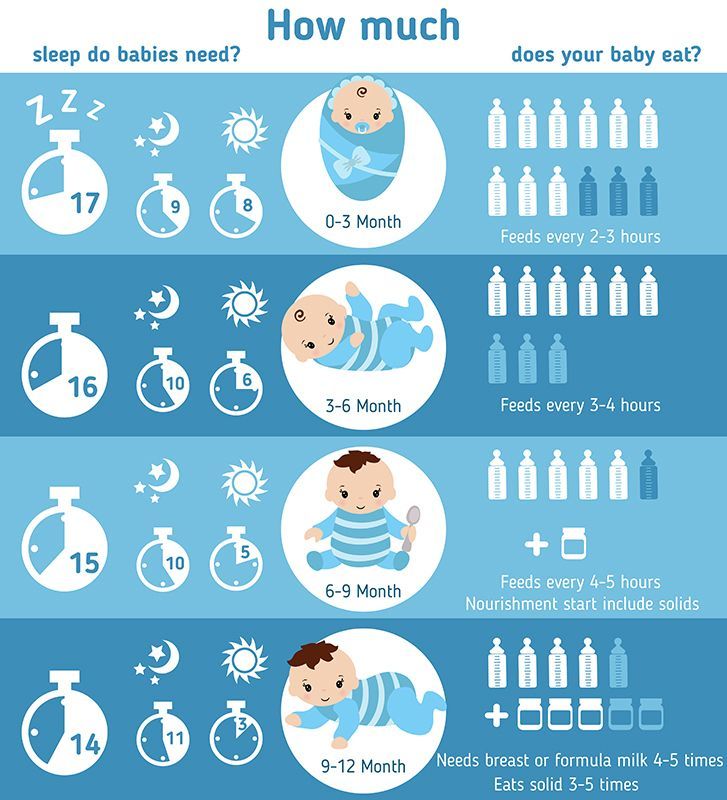Feeding down syndrome babies
Food for Thought: Addressing Feeding and Swallowing Challenges
From Down Syndrome World Summer 2016
By Arwen Jackson, M.A., CCC-SLP; Bridget Harrington, M.A., CCC-SLP; and Carol Spicer, OTR/L, Anna and John J. Sie Center for Down Syndrome, Children’s Hospital Colorado
It’s important to identify and treat feeding and swallowing issues early to ensure your child with Down syndrome gets the most out of every healthy meal.
Children with Down Syndrome can encounter problems with feeding or swallowing due to physical, medical, or behavioral issues associated with their condition. Low muscle tone , sensory problems, food refusal, low endurance, or issues with oral motor skill development can all lead to problems that make eating difficult. This creates stress for children and their parents and can ultimately interfere with a child’s ability to grow and thrive.
A safe and enjoyable meal begins with attending to your child’s cues and supporting where he or she is developmentally.
BUILDING UP BABY
Both breast- and bottle-feeding help babies grow and develop oral motor skills. Beyond looking at your baby’s mouth, it is critical to observe the coordination of breathing and swallowing, the level of alertness, and beginning postural control. Babies do best with latching when they are in an awake, alert state. To help babies stay awake, talk to them, stroke their feet, or change their diapers.
This article was published in the award-winning Down Syndrome World™ magazine. Become a member to read all the articles and get future issues delivered to your door!
A pediatrician may suggest working with specialists, such as those at the Feeding Clinic at the Anna and John J. Sie Center for Down Syndrome at Children’s Hospital Colorado, to develop a safe and effective feeding plan that can be adapted to babies who breast-feed, bottle-feed, or both.
CAREFUL OBSERVATION
A parent’s power of observation is crucial in detecting issues with feeding and swallowing. Look for signs of swallowing difficulties, such as red watery eyes, coughing, choking, congestion, and chronic pulmonary or respiratory illness. Any of these could indicate dysphagia, or difficulty swallowing, which requires further medical investigation.
Look for signs of swallowing difficulties, such as red watery eyes, coughing, choking, congestion, and chronic pulmonary or respiratory illness. Any of these could indicate dysphagia, or difficulty swallowing, which requires further medical investigation.
During meals, feeding difficulties may appear as prolonged or no chewing, overstuffing the mouth, and pocketing food. Behavioral signs related to feeding issues can include, but are not limited to, food refusal, inability to sit at the table, unwillingness to try new foods, or willful gagging and vomiting.
If your child is overstuffing his or her mouth, place two or three bites of food on a plate at a time and continue offering small servings. Children often have difficulty controlling the impulse to stuff their mouths when offered a full plate of food.
Poor postural stability also affects children’s ability to sit and actively participate in feeding themselves. If they cannot hold their heads up independently or have difficulty sitting, eating safely is more challenging. To improve posture, try holding your child in a more upright position on your lap or placing small towel rolls on either side of the trunk while in a high chair. This may offer enough support to free up the child’s hands for food exploration and self-feeding.
To improve posture, try holding your child in a more upright position on your lap or placing small towel rolls on either side of the trunk while in a high chair. This may offer enough support to free up the child’s hands for food exploration and self-feeding.
SETTING THE TABLE
If your child appears to have behavioral or sensory issues with food, try these tips to set him or her up for success:
- Lay the groundwork for fun and exploration before mealtime. Let children have a voice in what they want to eat and allow them to help with meal preparation — make a smoothie together, for example. Allow them to experience the sensory side of preparing food by touching, smelling, and of course, tasting the ingredients.
- Eat at their eye level. Children learn eating skills by watching you, so it’s important that you model these skills at their eye level.
- Listen — even when your child isn’t saying anything.
 Young children with Down syndrome may take longer to chew and swallow food than typical children. Don’t rush them. Understand that nonverbal cues, such as pushing a spoon away or turning the head to the side, are your child’s way of saying, “I’m not ready for another bite yet.” Respecting these signs builds trust, which is the foundation of a successful feeding relationship.
Young children with Down syndrome may take longer to chew and swallow food than typical children. Don’t rush them. Understand that nonverbal cues, such as pushing a spoon away or turning the head to the side, are your child’s way of saying, “I’m not ready for another bite yet.” Respecting these signs builds trust, which is the foundation of a successful feeding relationship.
Finally, remember that every child is different and a one-size-fits-all approach to treating feeding and swallowing challenges may not work. Pediatricians and specialists can be invaluable resources, assisting parents in developing evidence-based, individualized feeding plans to help children find mealtime success.
PERSISTENT PROBLEMS
Feeding and swallowing challenges can follow individuals with Down syndrome into adulthood. If this happens, it’s important for friends, family, and caregivers to encourage or provide consistent, structured mealtimes.
Being attentive to adults’ feeding behaviors is important, as some people may not be able to verbalize that a problem, such as a cavity or pain when swallowing, is present. Refusal to eat, sudden shifts in food choices and nutrition level, and changes in normal feeding behavior may be clues that something is amiss.
Refusal to eat, sudden shifts in food choices and nutrition level, and changes in normal feeding behavior may be clues that something is amiss.
READ MORE
The following resources provide additional information for parents whose children with Down syndrome have feeding and swallowing issues:
- Child of Mine: Feeding with Love and Good Sense by Ellyn Satter (Third Edition, Bull Publishing Company, 2000)
- Gross Motor Skills in Children with Down Syndrome: A Guide for Parents and Professionals by Patricia C. Winders (Woodbine House, 2007)
- Feeding Matters: feedingmatters.org
- “Healthy Eating Habits in Children with Down Syndrome,” National Down Syndrome Society: www.ndss.org/resources/nutrition/
Find a medical care center near you that specializes in treating patients with Down syndrome at www.globaldownsyndrome.org/research-medical-care/medical-care-providers.
Like this article? Join Global Down Syndrome Foundation’s Membership program today to receive 4 issues of the quarterly award-winning publication, plus access to 4 seasonal educational Webinar Series, and eligibility to apply for Global’s Employment and Educational Grants.
Register today at downsyndromeworld.org!
Breastfeeding an infant with Down syndrome
How does breastfeeding help my baby?
Breast milk:
- is more nutritious and easier to digest than formula
- gives immune protection not found in formula
- lowers risk of infections
- helps minimize allergies
- helps the digestive system mature; protects against some bowel problems
- lowers risk of Sudden Infant Death Syndrome (SIDS)
- promotes eye and brain development
- is more economical than formula
When you breastfeed:
- you crate a special bond with your baby
- your baby's mouth and tongue coordination improves, which will help speech skills
- you burn more calories than usual
- your uterus may shrink toward its pre-pregnancy size more quickly
For more details, see the education sheet "Breastfeeding."
Are there special benefits for babies with Down syndrome?
Babies with Down syndrome have a higher risk of infection—and breast milk helps protect again infection more than formula does. Whenever a mother is exposed to a virus, her body makes antibodies that protect her from getting that infection again. She passes these antibodies on to her baby in her breast milk.
Whenever a mother is exposed to a virus, her body makes antibodies that protect her from getting that infection again. She passes these antibodies on to her baby in her breast milk.
Because breast milk is easy to digest, stools are very soft and easy to pass. This may be helpful for infants who have bowel problems related to Down syndrome.
Infants with Down syndrome usually have low muscle tone. Breastfeeding offers extra stimulation through skin-to-skin contact.
What challenges could my baby have with breastfeeding?
- low muscle tone
- non-rhythmic suck
- arching of the body
- over-sensitive to stimulation
- weak reflexes for sucking, swallowing, and gagging
- may tire more easily and not nurse long enough to get the hind milk (which has the most calories)
How can I help my baby breastfeed?
Feed often: 8 or more times in 24 hours. You may need to wake your baby to feed. Look for mouth or hand movement even if the baby's eyes are closed. This usually means the infant is in a lighter sleep and can wake up more easily. Other ways to wake the baby: undress for diaper change, or make skin-to-skin contact.
This usually means the infant is in a lighter sleep and can wake up more easily. Other ways to wake the baby: undress for diaper change, or make skin-to-skin contact.
A baby with low muscle tone usually sucks better when the head and bottom are level, or close to it. Support your baby using pillows on your lap.
If the baby tends to arch the body, try to hold the body flexed, with knees bent and spine rounded. Swaddling in a blanket in a flexed position can help.
If your baby does not start sucking, express some breast milk onto the nipple by hand, or use a pump to get "let-down" started. This can encourage the infant to suck.
Once baby starts sucking, look for jaw, ear, and temple movement. If not seen, the infant's suck is probably not as strong as it needs to be.
Sometimes the dancer-hand position (see picture below) can be used to support the infant's chin.
Slide the hand under your breast forward, so you are supporting the breast with 3 fingers rather than 4. Form a U-shape with your thumb and forefinger to cradle your baby's chin. This will help your baby press the nipple and areola between the gums.
Form a U-shape with your thumb and forefinger to cradle your baby's chin. This will help your baby press the nipple and areola between the gums.
If the infant has a non-rhythmic suck, try using a rocking chair, and offer extra chin support while breastfeeding.
Breastfeeding in calm surroundings with few distractions can help the infant who easily overreacts to stimulation.
A breast pump can boost your milk supply while you get started. Feel free to ask your health care provider or lactation specialist.
How will I know if my baby is getting enough milk?
Your baby should nurse every 2 or 3 hours (8 to 12 times in 24 hours), including some feedings during the night. Here are some things to watch for:
Watch for this pattern in your baby's urine and stools during the first week after birth:
| Days after birth | Wet diapers (at least this many in 24 hrs) | Stool color | Number of stools (at least this many in 24 hrs) |
| 1st day | 1 | greenish-black | possible stool smears in first 24 hours |
| 2nd day | 2 | 1 to 2 stools | |
| 3rd day | 3 | stool turns yellower, softer, and seedier | 2 to 4 stools |
| 4th day | 4 | 3 to 5 stools | |
| 5th day | 5 | yellow, soft, seedy | 3 to 5 stools |
What else do I need to know?
Take care of yourself. You will be spending a lot of time each day feeding your baby. Patience is important.
You will be spending a lot of time each day feeding your baby. Patience is important.
Get comfortable before starting a feeding. Find a special place—perhaps where you can look out of a window. Cuddle and chat with your baby while feeding.
Keep what you need at hand—maybe the phone and something to drink. You may want to listen to music or a relaxing program. If you are comfortable and well supported physically and emotionally, you will have more energy to support your baby.
Questions?
This sheet is not specific to you and your baby, but provides general information. If you have any questions, please talk to the nurse or lactation specialist.
At home, if you cannot tell if your baby is getting enough milk, or if you have other concerns, please call the clinic. If you need a pump or a lactation specialist, call:
Hollister at 1-800-323-4060, or
Medela at 1-800-835-5968.
La Leche League, International provides help and support to breastfeeding mothers over the phone and in support groups. For information, call 1-800-525-3243.
For information, call 1-800-525-3243.
Children's Minnesota
Last reviewed 8/2015
Back To Top
Feeding children with special needs
American Academy of Pediatrics and The American College of Obstetricians and Gynecologists. Breastfeeding Handbook for Physicians 2006). - American Academy of Pediatrics and American College of Obstetrics and Gynecology. "Medical Guide to Breastfeeding", 2006.
Lawrence , R . A . & Lawrence , R . M . Breastfeeding : a guide for the medical profession ( Elsevier Mosby , Maryland Heights , MO , 2011). - Lawrence R.A., Lawrence R.M., "Breastfeeding: A guide for healthcare professionals." (Publisher Maryland Heights , Missouri, USA: Elsevier Mosby; 2011.)
- Lawrence R.A., Lawrence R.M., "Breastfeeding: A guide for healthcare professionals." (Publisher Maryland Heights , Missouri, USA: Elsevier Mosby; 2011.)
Prime, D.K.et al. Simultaneous breast expression in breastfeeding women is more efficacious than sequential breast expression. Breastfeed Med 7, 442-447 (2012). - Prime D.K. et al., “During the breastfeeding period, pumping both breasts simultaneously is more productive than sequential pumping.” Brest Med (Breastfeeding Medicine) 7, 442-447 (2012).
Morton, J., Hall, J.Y., Wong, R.J., Benitz, W.E. & Rhine, W.D. Combining hand techniques with electric pumping increases milk production in mothers of preterm infants. J Perinatol 29, 757–764 (2009). — Morton J., Hall J.I., Wong R.J., Benitz W.I. and Rhine, W.D., "Manual pumping combined with an electric breast pump increases breast milk production in mothers of preterm infants. " J Perinatol (Journal of Perinatology) 29, 757-764 (2009)
" J Perinatol (Journal of Perinatology) 29, 757-764 (2009)
Hill, P.D., Aldag, J.C., Chatterton RT. Initiation and frequency of pumping and milk production in mothers of non-nursing preterm infants. J Hum Lact . 2001;17(1):9–13 - Hill P.D., Aldag J.S. and Chatterton, R.T., "Onset and frequency of expression and milk production in mothers who have given birth to premature babies and have not breastfed them." J Hum Lakt (Journal of the International Association of Lactation Consultants) 17, 9-13 (2001).
Hill, P.D., Aldag, J.C., Chatterton RT, Zinaman M. Comparison of Milk Output Between Mothers of Preterm and Term Infants: The First 6 Weeks After Birth. J Hum Lact . 2005 February 1, 2005; 21(1):22–30. - Hill P.D., Aldag J.S., Chatterton R.T., Zinaman M., "Comparison of the amount of milk in mothers of full-term and premature babies in the first 6 weeks after birth. " J Hum Lakt (Journal of the International Association of Lactation Consultants) 2005, 21(1): 22-30.
" J Hum Lakt (Journal of the International Association of Lactation Consultants) 2005, 21(1): 22-30.
Parker, L.A., Sullivan, S., Krueger, C. & Mueller, M. Association of timing of initiation of breastmilk expression on milk volume and timing of lactogenesis stage II among mothers of very low-birth-weight infants. Breastfeed Med (2015). - Parker L.A., Sullivan S., Kruger S., Kelechi T. and Muller M., "Association of the time of initiation of expression with the amount of milk and the timing of the second stage of lactogenesis in mothers of children who had extremely low birth weight" . Brestfeed Med (Breastfeeding Medicine) (2015)
Meier, P.P., Engstrom, J.L., Janes, J.E., Jegier, B.J. & Loera, F. Breast pump suction patterns that mimic the human infant during breastfeeding: Greater milk output in less time spent pumping for breast pump-dependent mothers with premature infants. J Perinatol 32, 103-110 (2012). - Meyer P.P., Engstrom J.L., Jaynes J.I., Jaegier B.J., Loera F. "Pumping patterns that mimic the behavior of a breastfeeding baby: more milk and less time for constant pumping mothers of premature babies". J Perinatol (Journal of Perinatology) 32, 103-110 (2012).
- Meyer P.P., Engstrom J.L., Jaynes J.I., Jaegier B.J., Loera F. "Pumping patterns that mimic the behavior of a breastfeeding baby: more milk and less time for constant pumping mothers of premature babies". J Perinatol (Journal of Perinatology) 32, 103-110 (2012).
Torowicz, D.L., Seelhorst, A., Froh, E.B., Spatz, D.L. Human milk and breastfeeding outcomes in infants with congenital heart disease. Breastfeed Med 10, 31–37(2015). - Torowicz DL , Seelhorst , FroH EB , Spatz DL , "Breast milk and breastfeeding outcomes for children with congenital heart disease", Brestfeed Med (Breastfeeding Medicine) 10, 31-37 (2015).
Reilly, S. et al. ABM clinical protocol #18: Guidelines for breastfeeding infants with cleft lip, cleft palate, or cleft lip and palate, revised 2013. Breastfeed Med 8, 349–353 (2013) - Reilly S. et al., " AVM Clinical Protocol No. 18: Guidelines for breastfeeding children with cleft lip, cleft palate, or cleft lip and palate, 2013 edition. Brestfeed Med (Breastfeeding Medicine) 8, 349–353 (2013).
Breastfeed Med 8, 349–353 (2013) - Reilly S. et al., " AVM Clinical Protocol No. 18: Guidelines for breastfeeding children with cleft lip, cleft palate, or cleft lip and palate, 2013 edition. Brestfeed Med (Breastfeeding Medicine) 8, 349–353 (2013).
Thomas, J., Marinelli, K.A., & Hennessy, M. ABM clinical protocol #16: Breastfeeding the hypotonic infant. Breastfeed Med 2, 112–118 (2007). — Thomas J., Marinelli C.A. and Hennessy, M., "AVM Clinical Protocol #16: Breastfeeding a Baby with Reduced Muscle Tone." Brestfeed Med (Breastfeeding Medicine). 2, 112–118 (2007)
Breastfeeding and Down syndrome
donate milk
Find milk
Down syndrome is the most common hereditary disease. The birth rate of children with Down syndrome ranges from 1:600 to 1:900.
Caring for a baby with Down's Syndrome can be difficult, but the patience and perseverance of parents in achieving goals, as well as the growth and development of the child, the formation of muscle tone, makes it possible to establish breastfeeding. You and your baby can experience all the benefits of breastfeeding.
You and your baby can experience all the benefits of breastfeeding.
Some of these benefits are:
-
Protection against infections. Children with Down syndrome are particularly susceptible to respiratory tract infections, ear infections, thyroid disease, and cancer. Unlike artificial infant formula, breast milk, which contains living cells and antibodies, has a protective effect against all infections. When a breastfeeding mother encounters a virus, her body produces antibodies that help prevent re-infection with this infection. These specific antibodies, together with breast milk, enter the body of the child, thereby protecting him as well.
-
Improving the functioning of the child's digestive system. Children with diabetes often have digestive problems due to weak gastrointestinal muscle tone. Unlike formula, breast milk is easier to digest and helps relieve digestive problems like constipation.
-
Reducing the risk of allergies and skin problems.
 Children with Down syndrome often have more skin problems than healthy children, such as dry skin, eczema, seborrhea, and cheilitis (a benign inflammatory disease of the lips). They are also more prone to food allergies. Breast milk reduces the incidence of all these diseases.
Children with Down syndrome often have more skin problems than healthy children, such as dry skin, eczema, seborrhea, and cheilitis (a benign inflammatory disease of the lips). They are also more prone to food allergies. Breast milk reduces the incidence of all these diseases. -
Development of the speech apparatus. Children with Down syndrome have various anatomical features of oral development, such as an open bite and a relatively large tongue that may not fit well in the mouth. This can affect proper attachment to the breast and lead to problems with breastfeeding. However, the sucking movements necessary for feeding, training and thereby strengthening the muscles of the speech apparatus and tongue, further contribute to the proper development of speech.
-
Psycho-emotional development. Breast milk contains docosahexaenoic acid (DHA), an omega-3 fatty acid not found in cow's milk. This fatty acid DHA plays an important role in the development of the brain and eyes.
 Several studies have shown that breastfed babies tend to have 8 IQ points higher than their formula-fed peers. This increased brain stimulation is especially beneficial for children with Down syndrome.
Several studies have shown that breastfed babies tend to have 8 IQ points higher than their formula-fed peers. This increased brain stimulation is especially beneficial for children with Down syndrome. -
Additional stimulation. The extra skin-to-skin contact that goes hand in hand with breastfeeding babies provides extra stimulation to reach their full potential.
-
Proximity of the child's matter. Feeding a child with Down syndrome is not only an opportunity to provide skin-to-skin contact, but also a way to spend more time with the child, hug him. Mothers of special children often feel helpless in caring for such babies, so breastfeeding and breastfeeding can help a mother feel more confident because they are doing something meaningful, important for their child to ensure their health and development. If, for some reason, the mother has not been able to breastfeed, it is necessary to provide additional bodily contact between the child and the mother - an intimacy that helps both mother and child develop.

-
Acquisition of maternal childcare skills. The doctor will tell you about the ways of caring for the child in the first days after childbirth - these are skills that will be useful to you in raising a child for many years. However, the mother needs to learn to understand her child correctly on her own. In this, she is helped by the “mother hormone” - oxytocin, which is released during breastfeeding. Mom rests during feeding and is able to care for and understand the needs of the baby better.
-
Feeding during sickness and comfort. Children with Down syndrome are prone to diseases such as heart defects, oncology, vision problems. Therefore, a medical examination, which includes various procedures or operations, is carried out more often in children with DM. Breastfeeding helps the baby survive stress during painful procedures, calm down during illness, and it is easier to endure it.
Babies with Down's syndrome have difficulty breastfeeding due to anatomical and medical conditions such as inability to suckle and control swallowing, decreased muscle tone, and various illnesses. Children with diabetes who have a number of diseases need additional medical procedures and surgical interventions that involve the separation of mother and child for some time.
Children with diabetes who have a number of diseases need additional medical procedures and surgical interventions that involve the separation of mother and child for some time.
Down's syndrome can cause hypertonicity (excessive tension in a particular muscle group) or hypotonicity (weakened muscle condition), leading to problems with breastfeeding.
If the baby does not suckle effectively, he will tire quickly, as a result of which he cannot be at the breast long enough to suck out the richer hindmilk necessary for weight gain. "Lazy suckers" need more help from the nursing staff or a lactation consultant to solve this problem.
Muscle tone in children with Down syndrome leads to a number of problems with breastfeeding. You can experiment with different positions to find the best position for both mom and baby. A rocking chair helps many mothers during breastfeeding, the motion sickness process helps mother and baby relax during feeding.
Even if you can find a comfortable position for feeding your baby, there may be problems with the correct attachment of the baby to the breast, due to the characteristics of the bite and the large tongue. Children with hypotension are recommended to be fed by laying them on a pillow so that the body and head are at the same level. It is important to keep an eye on the baby's chin so that the grip is not lost and there are no gaps between the baby's chest and mouth.
Children with hypotension are recommended to be fed by laying them on a pillow so that the body and head are at the same level. It is important to keep an eye on the baby's chin so that the grip is not lost and there are no gaps between the baby's chest and mouth.
Children with hypertonicity should be helped to relax, try to position them so that the back is rounded, the knees are bent and brought to the stomach. Sometimes loose swaddling is necessary to maintain this body position.
You can check whether the baby has received enough breast milk by counting the number of urination and frequency of the baby's stools. A child's weight is the best indicator of a child's adequate nutrition and should be closely monitored.
It is important to remember that even if breastfeeding cannot be arranged, it is possible to feed the baby with bottled expressed breast milk or alternative feeding devices (eg breastfeeding system). Breastmilk offers many advantages over formula and solves many problems with feeding and caring for special babies. Even if your baby is mixed-fed (formula and breast milk), he receives the nutrition and benefits that are important for his growth and development from breast milk.
Even if your baby is mixed-fed (formula and breast milk), he receives the nutrition and benefits that are important for his growth and development from breast milk.
Lactation support with a breast pump allows you to consider different options for feeding your baby. Some children with Down's syndrome are unable to breastfeed, so mothers maintain the proper level of lactation exclusively by pumping.
All breast pumps are different. Moms who need to pump often will benefit from a double electric breast pump. Some of them may be provided by medical organizations and included in the cost of medical insurance (not included in Russia - ed.).
Remember that breast milk is essential for your baby. During pregnancy, research information about breastfeeding and breastfeeding support groups in your area beforehand.
Internationally Certified Lactation Counselors (IBCLCs) can help mothers and babies with Down Syndrome breastfeed and offer personalized breastfeeding advice.











